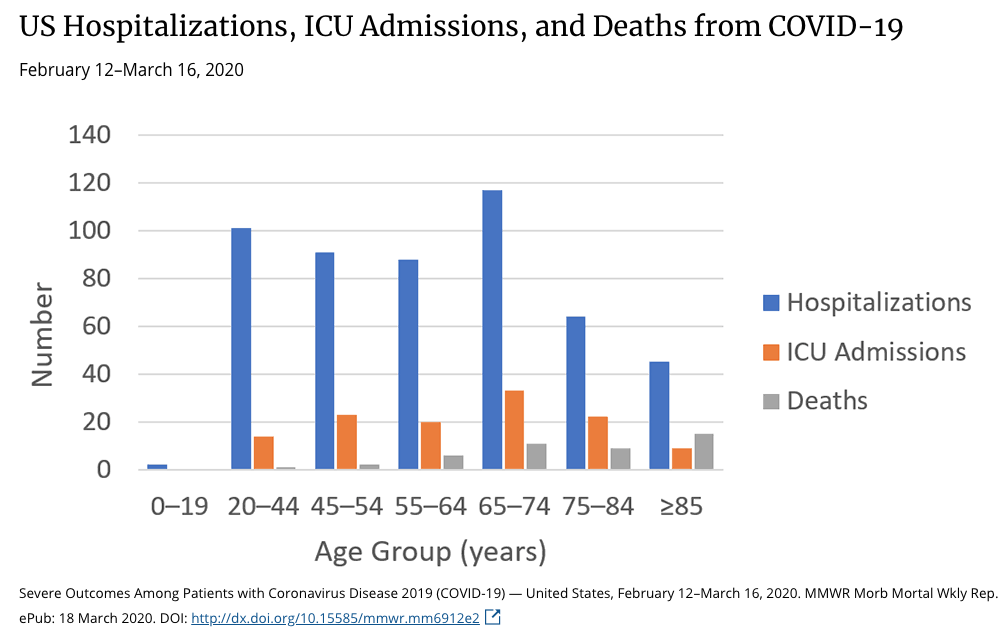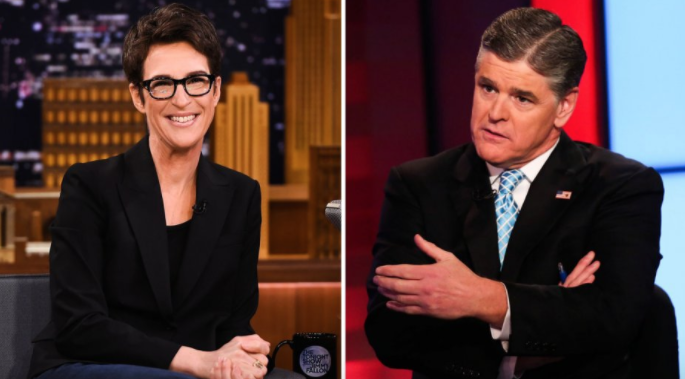Aging into TV News
Deborah L. Jaramillo / Boston University

We are currently living through a pandemic, and even in this moment, generational differences are a source of both identity and tension. On Twitter, in the early days of the quarantine, Gen Xers displayed their self-isolation skills with pride. Millennials and Gen Xers expressed concern for aging parents and grandparents. Many directed their ire at Gen Z for continuing to party. Old age is a key factor in the lethality of COVID-19, so it had not escaped anyone’s notice that Fox News—presumed to be the channel for older, conservative Americans—downplayed the threat. By March 15th, Fox walked it back. Suddenly, the threat was real.
Usually, complaints against Fox News center on the political health of the nation; in this instance, the issue was the physical health of its viewers. The stereotype of the white-haired Fox News viewer is pervasive. A much-tweeted prank around holiday season is the blocking of Fox News on older relatives’ television sets. Grandma and grandpa will be apoplectic that their cherished news source has disappeared, and they further will not have the technical know-how to restore it. The political impetus for the prank is this: older Americans vote in greater numbers than younger Americans, and Fox News has a fiercely loyal audience for its Trumpist agenda. The older audience is, in fact, sizable (as ratings for news programming go), but the full picture is a little more complicated than that.
A 2018 Pew survey found that people over 50 get their news primarily from television.[1] 65% of people aged 50-64 typically flock to TV, and 81% of people over 65 do the same. While younger people favor social media, they pull from various sources; as the Pew study states, “No more than half of [people 18-49] get news often from any one news platform.” Age—as a marker of identity and a demographic variable attached to specific television genres and, when applicable, to the consumer products that advertise within those genres—has been on the radar of television scholars using diverse frameworks and pursuing diverse research agendas. But, as I noted in my 2019 column, TV news is frequently absent from our field’s conversations altogether. So, let’s dive into prime-time cable news and see who is watching what.
TV tends to follow the young, but news has very rarely jumped on that bandwagon (one recent exception is the concerted tilt toward True Crime in network news divisions). As we know, the measurement of television audiences isolates particular age ranges that carry value. For many shows, a certain rating or share “in the demo” refers to how well that program performed among 18-49 year olds. For news, “in the demo” refers to 25-54. It’s not an enormous jump up from 18-49, but it is an admission that news operates according to a different set of expectations in the market for audiences. A news channel isn’t punished, in other words, for flourishing among 49-54 year olds.
In 2013 I wrote a piece for Antenna discussing a pattern of contemporaneous programming strategies on two of NBC Universal’s cable channels, one of which was MSNBC. MSNBC’s aspirational strategy evinced a dissatisfaction with the dominant (read: older) viewership. The shuffling of hosts to different time slots, the hiring of young hosts, and especially the slotting of then-thirtysomething Chris Hayes into prime time signaled a leaning into, or, rather, a gazing dreamily into the eyes of young viewers. Now, by young, I don’t mean tweens. MSNBC’s placement of Radiohead’s “National Anthem” in their pro-resistance promos after the 2016 presidential election may give you a general sense of the audience MSNBC was targeting.

A quick look at the cable news primetime competition paints an interesting picture of a television genre splintering according to age in some unexpected ways. At 8pm, the competition for under-50s is a bit surprising. As recently as March 9th, Tucker Carlson Tonight (Fox News) outperformed All In with Chris Hayes (MSNBC) among 18-49 year olds and 25-54 year olds by a ratio of 2-to-1.[2] Older viewers may remember Carlson from such TV moments as his humiliation by Jon Stewart on Crossfire in 2004 and, well, just his decision to wear bow ties on screen. That’s the guy with a larger number of younger viewers than Chris Hayes.
Even though Anderson Cooper 360 (CNN), the other 8pm competitor, had the fewest total viewers of the three, it outperformed All In in the 18-34, 18-49, and 25-54 demos. Crucially, it also had the fewest viewers over 50. For the legacy cable news channel to skew younger than MSNBC, which has worked to align itself with youthful progressive politics, may be one indication that MSNBC can’t shake its own legacy of being an also-ran. But for Fox News, the long-dominant, right-wing channel, to skew so much younger than its pop culture reputation lets on is an invitation to question dominant narratives about conservative TV news viewers.
At 9pm the primary competition is more evenly matched. Hannity (Fox News) beat The Rachel Maddow Show (MSNBC) by only two hundredths of a rating point among 18-49 year olds, and it beat her in the 25-54 category by six hundredths of a point. Soak that in. Sean Hannity has cultivated a larger young(ish) audience than Rachel Maddow. Ultimately, fighting for younger viewers belies the fact that the bulk of all of these shows’ audiences is over 50. While Hannity earned a .46 rating in the key 25-54 demo, the program earned a 2.74 rating among viewers 50+. Similarly, Maddow saw a .40 in the key demo and a 2.35 in the 50+ demo. Which audience carries more value to the channel, to advertisers, and to our political parties, and can that value be consistent across all three entities? If the game is to skew younger, then Maddow may have an edge overall with slightly fewer younger viewers and not quite as large of an older audience.

Of course, prime time ratings offer just a snapshot, but the bigger picture is not much different. Fox News ranked 19th on the list of the top 20 basic cable channels of 2019 among 18-49 year-olds. To see it sitting there between Freeform and Lifetime gave me pause. How has Fox News tried to appeal to 18-49 year olds? MSNBC, for its part, has made some adjustments to no avail. The energy Hayes brings to his show via some of his guests, his hipster-adjacent vibe, and his pre-quarantine Friday format—live in front of a studio audience—failed to elevate his show to Maddow levels. And what of Hayes’ lead-in?
For reasons at least partially tied to his history of generally disgusting behavior toward women, long-time Hardball host Chris Matthews opened his 7pm show on March 3rd, announced his retirement, and split. Youthful, energetic mainstay Steve Kornacki—ever the team player—appeared in Matthews’ seat after the commercial break with no preparation. Kornacki’s emotional farewell to Matthews at the conclusion of the show may well have been a wave goodbye to the tradition of an older, white male host in the 7pm slot. In the meantime, the 7pm slot is in limbo as special pandemic coverage has upended business as usual. One hopes that, when the crisis abates and the channel casts a permanent host, its decision will acknowledge how age intersects with a number of other crucial variables, especially in this political moment.
Image Credits:
- COVID-19’s Generational Gaps in the United States
- Jon Stewart humiliating Tucker Carlson on Crossfire in 2004 (author’s screengrab)
- Two major cable news competitors: MSNBC’s Rachel Maddow and Fox News’ Sean Hannity (author’s screengrab)
References:
- Shearer, Elisa. 2018. “Social media outpaces print newspapers in the U.S. as a news source.” Pew Research Center. https://www.pewresearch.org/fact-tank/2018/12/10/social-media-outpaces-print-newspapers-in-the-u-s-as-a-news-source/. Accessed March 12, 2020. [↩]
- Metcalf, Mitch. 2020. “SHOWBUZZDAILY’s Top 150 Monday Cable Originals & Network Finals: 3.9.20.” ShowBuzzDaily, March 10. http://www.showbuzzdaily.com/articles/showbuzzdailys-top-150-monday-cable-originals-network-finals-3-9-2020.html. Accessed March 11, 2020. [↩]
Pingback: Convocatorias en publicaciones científicas – FACSO Educación Virtual